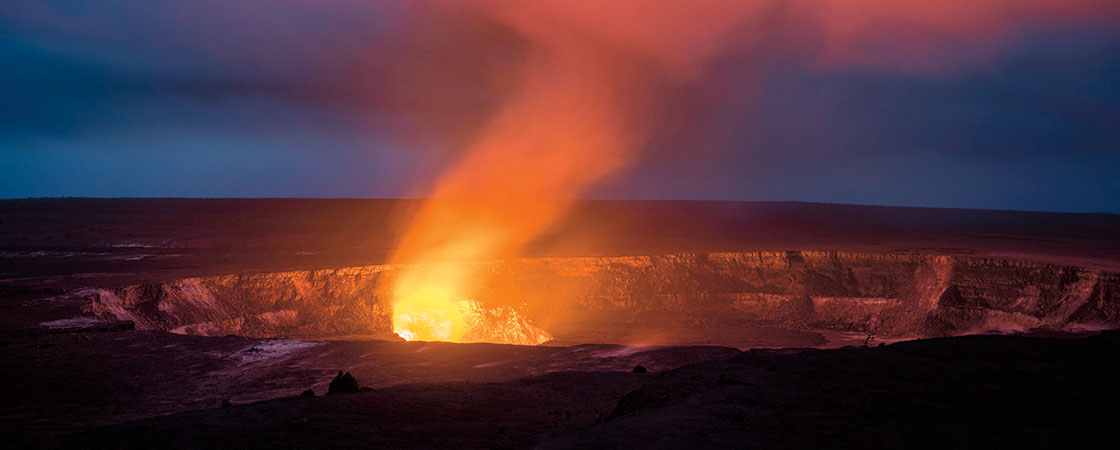JIM MCMAHON/MAPMAN®
Kilauea is in Hawaii.
It’s a sunny day in Hawaii. Palm trees sway in the breeze. Waves crash in the distance. But instead of sinking your toes into the sand, you watch blazing melted rock flow by your boots. It’s lava!
You’re standing on the edge of one of the most powerful forces in the world: a volcano. And this isn’t just any volcano. This is Kilauea, one of the most active volcanoes on the planet.
What are you doing here? You’re a volcanologist, a scientist who studies volcanoes. You travel the world trying to figure out when a volcano will become dangerous.
Lava usually flows gently out of Kilauea. But in 2018, the volcano erupted dangerously. Lava came pouring out. Could this happen again? That’s what you’re trying to figure out—by going into the volcano!
You’re standing on the edge of one of the most powerful forces in the world: a volcano. And this isn’t just any volcano. This is Kilauea. It’s one of the most active volcanoes on Earth.
What are you doing here? You’re a volcanologist. That’s a scientist who studies volcanoes. You travel around the world and try to figure out when a volcano will cause damage.
Lava usually flows gently out of Kilauea. But in 2018, the volcano erupted dangerously. Lava came pouring out. Could this happen again? That’s what you’re trying to figure out. How will you do that? By going into the volcano!

